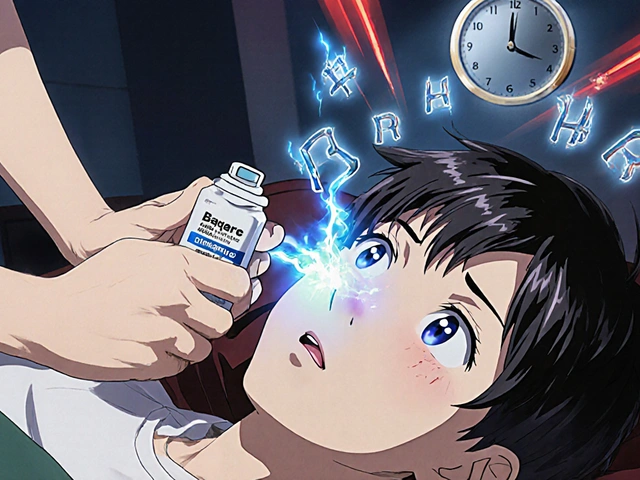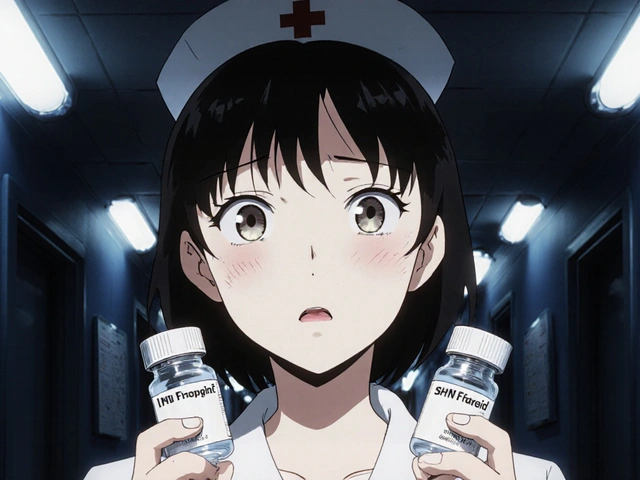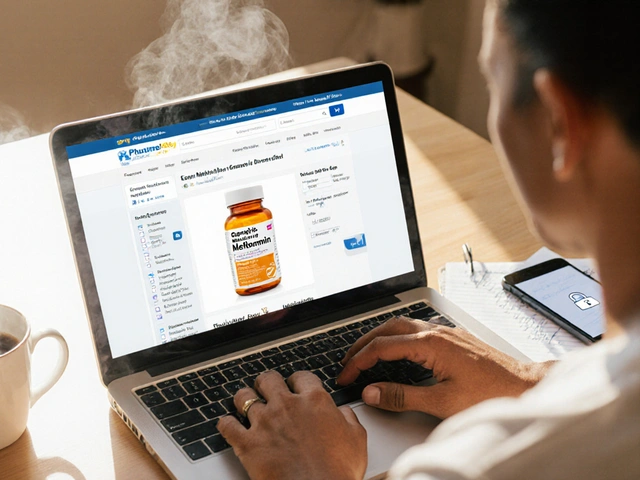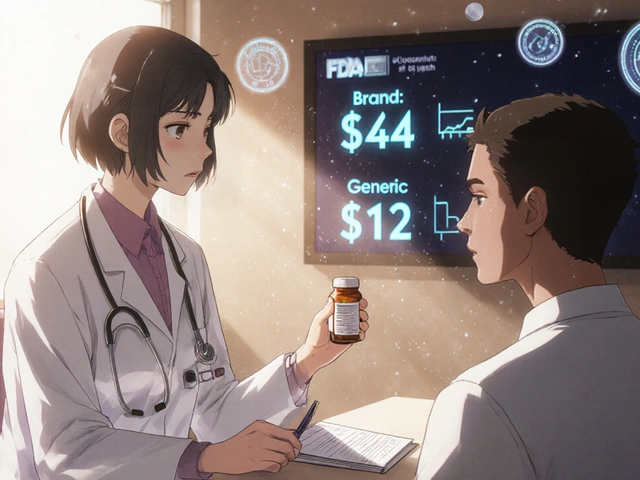Here’s something nobody wants to hear at the doctor’s office: “We’re starting you on steroids.” The word “steroid” conjures up plenty of worries, right? Suddenly you’re googling in the parking lot, trying to remember what the pharmacist said at the counter. This is especially true if your doctor handed you a prescription for prednisolone. Whether you’re dealing with a stubborn autoimmune issue, nasty allergies, or a flare-up of colitis, this medicine often steps onto the scene when your body won’t play nice. Maybe this is your first time—or maybe you’ve had steroids before and had a rough ride. Either way, navigating steroid therapy can feel a bit like driving through thick fog. You want practical, upfront advice with no sugar-coating. Good news: That’s what you’ll find here.
What Prednisolone Actually Does in Your Body
Prednisolone is not just “a steroid.” It’s a synthetic copy of a natural hormone your body makes—cortisol. It steps in as a backup quarterback when your own defenses either go haywire or leave you vulnerable. Doctors usually call on prednisolone when inflammation has gone rogue. Maybe you’ve just been diagnosed with something tough, like lupus, asthma, or rheumatoid arthritis. Or maybe your child—like my daughter Miriam—has trouble shaking off severe allergies. Either way, this tiny pill or spoonful of syrup can quickly put a leash on out-of-control symptoms.
But what’s actually happening inside? Prednisolone goes after inflammation at its core. It calms overactive immune responses and stops white blood cells from attacking your body’s own tissues. That’s lifesaving if your immune system isn’t good at distinguishing friend from foe. The fast-acting relief is why doctors love it for severe flare-ups, especially when nothing else helps so quickly. You might finally sleep after weeks of pain, or breathe easier on a day when you just can’t catch your breath.
What’s less obvious—but just as real—are the changes happening behind the scenes. Prednisolone alters how your body breaks down sugars, stores fat, and balances fluids. Unlike painkillers that just mask symptoms, this steroid makes deep shifts in how your body manages stress, fights germs, and processes nutrition. That’s why you often feel both better and different after starting it.
| Prednisolone Facts | Details |
|---|---|
| Typical Dosage Range (oral) | 5-60 mg daily |
| Speed of Symptom Relief | Often within 24-48 hours |
| Common Uses | Asthma, Crohn’s, lupus, autoimmune conditions, allergies |
| Generic Availability | Yes, globally |
| Average Prescription Duration | 1-4 weeks (can be longer for chronic conditions) |
Because it mimics cortisol, prednisolone also affects mood, sleep, and—even if you’re not eating more than usual—sometimes influences weight. It’s a bit like having a supercharged version of your regular hormone system. That helps explain both the dramatic improvements and the possible side effects.
Risks: The Side Effects You Need to Know
Steroids pack a punch. The same reason that makes prednisolone so powerful also brings real risks. The most common side effects people notice first? Changes in appetite (hello, late-night fridge raids), sleep issues (restlessness or even insomnia), fluid retention (suddenly your rings don’t fit), and mood swings. It’s not just a cliché—people do get irritable or emotional. Think of it as your body suddenly getting a hormone megadose, which can be jarring if no one warns you.
There are other side effects too. Longer courses, or higher doses, can thin your bones, bump up blood sugar, or turn your skin fragile. For anyone with diabetes, this can mean more careful monitoring of blood glucose. For kids, doctors keep a close eye on growth. Less frequently, there’s also an increased risk of infections because your immune system is being dialed down. No one likes the idea of catching colds more easily, but it’s a reality worth watching.
Here’s the other big truth: Not everyone gets all the side effects, and the short-term risks are usually less than the long-term ones. Most doctors will try to prescribe the lowest dose for the shortest time possible to avoid unnecessary trouble. Still, surprises happen. For example, when Miriam started prednisolone for severe asthma, she was five—and the first thing we noticed was her mood. One night she was chatty and wild, another night she was teary for no clear reason. Once, a rash appeared that vanished a day later. The changes can be dramatic or subtle, but you’ll usually spot something if you’re looking.
- Common short-term side effects: increased hunger, sleep disruption, mood swings, headaches, higher blood pressure.
- Long-term issues to watch: weakened bones, higher risk of infection, slow wound healing, fragile skin, risk of ulcers, and—rarely—eye problems like cataracts or glaucoma.
Very rarely, patients may experience more serious or allergic reactions: sudden swelling, trouble breathing, or hives. These need emergency attention. If you want a deep dive on the topic, check out the prednisolone side effect guide at Enkehaus Pharmacy—they do a great job of breaking down symptoms and what to watch for.
If you’re reading this thinking, “Do all steroids do this?”—yes, but not all at the same level. Prednisone, for example, is very similar but is converted by the liver into prednisolone. The side effects are related, but the body metabolizes them a bit differently. The risk:reward balance is always a personal calculation. If your doctor says you really need this, it’s usually because they’re weighing real benefits against possible downsides, step by step.

Benefits That Often Outweigh the Risks
For all the worries, prednisolone can be something of a medical miracle. Ask someone living with colitis, MS, or a hard-to-treat allergy, and you’ll hear about symptom-free weeks or even months thanks to the right steroid plan. With asthma, daily life can flip from one emergency to normalcy overnight. I’ll never forget Miriam running again after years of on-and-off wheeze. There’s something quietly amazing about how fast effective steroid therapy can stop joint swelling, calm a rash, or give a child a real night’s sleep after weeks of misery.
Doctors don’t throw prednisolone around casually. It’s reserved for when other options don’t work, or when the disease itself would do more harm left unchecked. If you’re newly diagnosed, you’re probably feeling flooded with new rules and worries. The upside? When prescribed and monitored the right way, prednisolone offers genuine, quality-of-life improvements. Dysregulated immune systems can be reined in, damage mitigated, and disease activity dialed way down. That’s especially true for conditions like lupus, inflammatory bowel disease, or giant cell arteritis, where unchecked inflammation causes permanent harm.
- Rapid symptom control (breathing, pain, rashes)
- Reduced need for hospital stays or ER visits
- Prevention of long-term organ damage
- Improved physical ability and fewer flare-ups
- When used early, can sometimes put a disease into long-term remission
Speed is another key benefit. You may have tried oral antihistamines, inhalers, or other anti-inflammatory pills week after week with limited effect. Prednisolone works much faster than these, often in hours or days. And because it’s so well-researched, doctors have a good sense of the expected timeline and outcomes for your particular issue. It means, with clear communication and a little patience, you can get your symptoms under control and start taking back pieces of your normal life.
Plus, the flexibility with dosing (pills, liquid, even injections) helps tailor doses as you improve. Many patients can get off steroids altogether after a course. Others might need a slower “taper.” Either way, the benefit can leave you feeling like yourself so much sooner than you might expect. It’s why, even with all the warnings about side effects, doctors turn to prednisolone again and again—it’s about restoring real function, not just numbers on a chart.
Monitoring and Tips for Staying Safe
Here’s the part where you really take control. Safety with steroids is all about regular check-ins and smart self-care. First, if this is your first prescription, ask your doctor clear, direct questions: How long will I take this? Is this dose high or low? Should I expect to taper off, or will I stop suddenly? Then keep a diary—or simple notes on your phone—about any side effects, sleep changes, and mood shifts. If you’re a parent, jot things down for your child. No detail is too small.
- Set reminders for medication times. Taking the dose in the morning can help match your natural cortisol rhythm and lower sleep troubles.
- Weigh yourself and track swelling—call your doctor if you notice rapid, unexplained weight gain.
- Let your doctor know if you start feeling unusually sad, anxious, or out of control—mood changes might mean an adjustment is needed.
- Plan bone health early: If you’re on steroids for more than three weeks, your provider may recommend calcium supplements.
- If you have diabetes, increase your blood sugar checks—steroids can bump up glucose quickly and quietly.
- Keep up with regular eye checks, especially for long-term prescriptions.
You might be surprised to hear that vaccinations become even more important while on steroids. Your immune defenses are dialed down, so getting up-to-date with flu, pneumonia, and other shots (as advised by your doctor) helps keep you out of the hospital. And if you’re feeling sick or exposed to someone with chickenpox or measles, get advice right away.
Final tip: Don’t stop prednisolone cold turkey. Your body gets used to the extra steroid help, so quitting suddenly can leave you dizzy, sick, or even in danger. Your doctor will help you taper down so your own hormone system can pick up the slack safely. I know parents sometimes think “she seems fine now, let’s just stop”—but never go it alone.
This all sounds like a lot, but most people taking prednisolone—especially with doctor supervision and a little family support—navigate this just fine. A few practical changes at home, and honest communication with your medical team, go a long way. Prednisolone isn’t a “forever” drug for most people. The goal is relief, recovery, and getting back to being yourself (or letting your child be a normal, energetic kid again). The best advice: stay informed, stay connected, and give yourself some grace as your body resets with a little chemical nudge.








Posts Comments
sharicka holloway July 22, 2025 AT 20:23
Prednisolone saved my life after my lupus flare last year. I was in so much pain I couldn’t get out of bed. Two days after starting it, I walked to the kitchen without crying. It’s not magic, but it’s the closest thing we’ve got when your body turns on itself. Just don’t skip the taper. I learned that the hard way.
Alex Hess July 23, 2025 AT 11:15
This is the most amateurish medical article I’ve read in months. You treat prednisolone like it’s a wellness trend, not a nuclear option. If you’re not monitoring glucose, bone density, and adrenal function weekly, you’re not treating-you’re gambling. And don’t even get me started on that ‘miracle’ nonsense.
Shubham Semwal July 23, 2025 AT 19:00
Let’s be real-this is just another way pharma keeps people dependent. Prednisolone doesn’t cure anything. It masks symptoms while your immune system slowly implodes. I’ve seen patients on it for 8 years. They’re not better. They’re just numb. And now they’re osteoporotic, diabetic, and depressed. This isn’t medicine. It’s chemical surrender.
Sam HardcastleJIV July 24, 2025 AT 14:35
While I appreciate the earnest tone of this exposition, I must express my profound reservations regarding the uncritical valorization of a glucocorticoid regimen that fundamentally alters hypothalamic-pituitary-adrenal axis homeostasis. The author’s casual reference to ‘feeling like yourself again’ is both ontologically misleading and clinically irresponsible.
Mira Adam July 25, 2025 AT 10:03
You call this ‘guidance’? You’re just feeding people sugar-coated fear. Prednisolone is a weapon. You don’t hand out weapons with a smile and a pamphlet. You train people how to use them-or don’t use them at all. This isn’t ‘self-care.’ It’s survival with side effects.
Miriam Lohrum July 27, 2025 AT 09:46
My daughter was on prednisolone for asthma at age five. We didn’t know what we were doing. But we watched her sleep through the night for the first time in a year. That’s not a miracle. That’s biology doing its job when the system breaks. I’m not grateful for the drug. I’m grateful we had the option.
Jebari Lewis July 28, 2025 AT 14:42
Can someone clarify something? I’ve heard conflicting things about calcium supplements. Do you take them while on prednisolone, or only after? And is it D3 + K2, or just D3? I’m trying to protect my bones but don’t want to overdo it. My doc said ‘maybe’ and I’m lost. Help.
Melania Rubio Moreno July 30, 2025 AT 13:21
why do ppl always act like steroids are the devil? i had a rash for 3 months, then took prednisone and it was gone in 2 days. now i’m not a zombie, i’m not fat, i’m just… not itchy. also, i didn’t even know i was supposed to taper???
Gaurav Sharma July 31, 2025 AT 21:53
Emotional instability? Mood swings? You call that a side effect? That’s the universe whispering: ‘You are not in control.’ Prednisolone doesn’t just alter chemistry-it exposes the fragility of the ego. The body doesn’t lie. It screams.
Rhiana Grob August 2, 2025 AT 07:34
I’m a nurse who’s seen patients on this for years. The ones who survive it best? They’re the ones who track their sleep, their weight, their moods. Not because they’re paranoid-but because they’re smart. You don’t have to fear the medicine. You just have to respect it.
Frances Melendez August 3, 2025 AT 13:40
How dare you normalize this? You’re telling people to just ‘take it’ like it’s aspirin? What about the children? The elderly? The ones who can’t afford bone scans or glucose monitors? This isn’t medicine-it’s privilege wrapped in a prescription bottle.
Jonah Thunderbolt August 3, 2025 AT 17:09
Okay but like… I took this for my eczema and I cried for 3 days straight. Then I ate 12 tacos in one night. Then I got a rash. Then I felt like a god. Then I felt like trash. Then I tapered. Now I’m just… me again? But also? I’m alive. 🤯💊😭
Rebecca Price August 3, 2025 AT 22:18
It’s funny how we treat steroids like villains when they’re just mimicking what your body already makes. The real villain? The system that waits until you’re on the brink before offering help. Prednisolone isn’t the problem. It’s the fact that we only have one tool for a thousand fires.
marie HUREL August 5, 2025 AT 05:01
I’m not a doctor, but I’ve been on this for 6 months. The worst part isn’t the weight gain or the insomnia. It’s the guilt. Like, I feel better, but I know I’m not ‘supposed’ to. Like I’m cheating somehow. I just want to be normal again. I think that’s the real side effect.
Write a comment